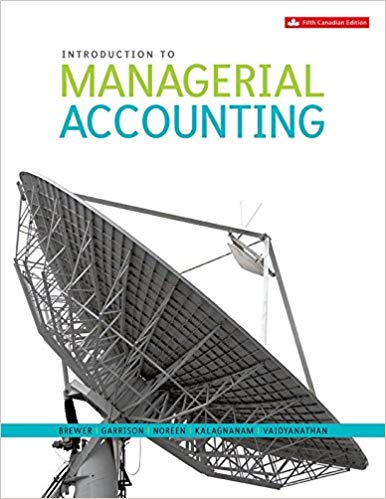Kootenay Vineyards is a large Canadian producer of red wines. The company needs to replace its wine-making
Question:
Kootenay Vineyards is a large Canadian producer of red wines. The company needs to replace its wine-making equipment. The current equipment was purchased 18 years ago at a cost of $2,000,000, and was depreciated over a 20-year period using the straight-line method, assuming no expected salvage value. Management believes that, currently, this equipment could be sold for $200,000. The new equipment would cost $2,850,000 and have an expected residual value of $525,000 at the end of its estimated life of 10 years.With the new equipment, the current operating costs of $1,500,000 would decrease by 30% in year 1, remain at that level for years 2 and 3, decrease by another 10% in year 4, and remain at that level for the remaining life of the asset.With the new equipment, Kootenay Vineyards would have to hire another operator at an annual cost of $30,000. The CCA rate for the wine-making equipment is 30%. Kootenay’s marginal tax rate is 40%, and its cost of capital is 12%.
Required:
1. Assuming that Kootenay decides to buy the new equipment now, calculate the initial investment.
2. Calculate the total net savings in operating costs over the expected life of the new equipment. Show your calculations.
3. Calculate the NPV of investing in the new equipment. Show your calculations.
4. If the maximum acceptable payback period for Kootenay is eight years, should the company replace the wine-making equipment now? Explain your rationale and show your calculations.
Salvage ValueSalvage value is the estimated book value of an asset after depreciation is complete, based on what a company expects to receive in exchange for the asset at the end of its useful life. As such, an asset’s estimated salvage value is an important... Cost Of Capital
Cost of capital refers to the opportunity cost of making a specific investment . Cost of capital (COC) is the rate of return that a firm must earn on its project investments to maintain its market value and attract funds. COC is the required rate of... Payback Period
Payback period method is a traditional method/ approach of capital budgeting. It is the simple and widely used quantitative method of Investment evaluation. Payback period is typically used to evaluate projects or investments before undergoing them,...
Step by Step Answer:

Introduction to Managerial Accounting
ISBN: 978-1259105708
5th Canadian edition
Authors: Peter C. Brewer, Ray H. Garrison, Eric Noreen, Suresh Kalagnanam, Ganesh Vaidyanathan





